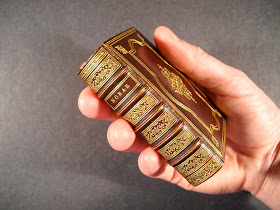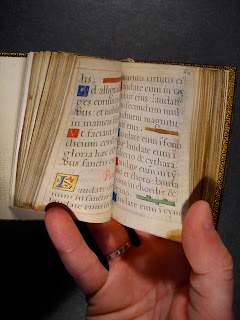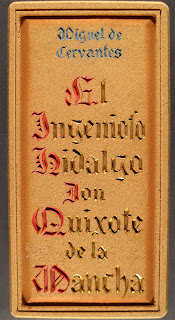 We have a number of Books of Hours in the collection, but this is one of the smallest, with each of its one hundred and fifty six parchment leaves measuring just over three inches tall and two inches wide. This tiny illuminated manuscript was made for a little girl, probably a young French princess, sometime between 1525 and 1545.
We have a number of Books of Hours in the collection, but this is one of the smallest, with each of its one hundred and fifty six parchment leaves measuring just over three inches tall and two inches wide. This tiny illuminated manuscript was made for a little girl, probably a young French princess, sometime between 1525 and 1545.Books of Hours contained a selection of prayers and psalms meant to be read by their owners throughout the day. The text of the prayers in this little volume is relatively large and very legible despite the tiny size of its pages, indicating that its reader, perhaps, was still very young. The amount of decoration in Books of Hours varies greatly; some are very plain while others include multiple full-page illustrations and decorated initials. This Book of Hours contains no portraits or miniatures, but nearly every page is decorated with colored inks and illuminated with gold leaf -- it's a clearly book that was meant to be pretty.
Sometime in the 19th century, this book's owner had it rebound in a beautiful but very tight leather binding. The word "tight" refers to the fact that the parchment leaves are sewn together so closely that it is now impossible to open the pages flat or to see their inside margins (from a blogger's perspective, it also makes this book really difficult to photograph!).
Ask for Manuscript Codex 003197 to see this treasure for yourself.
Posted for Anne Peale '11


